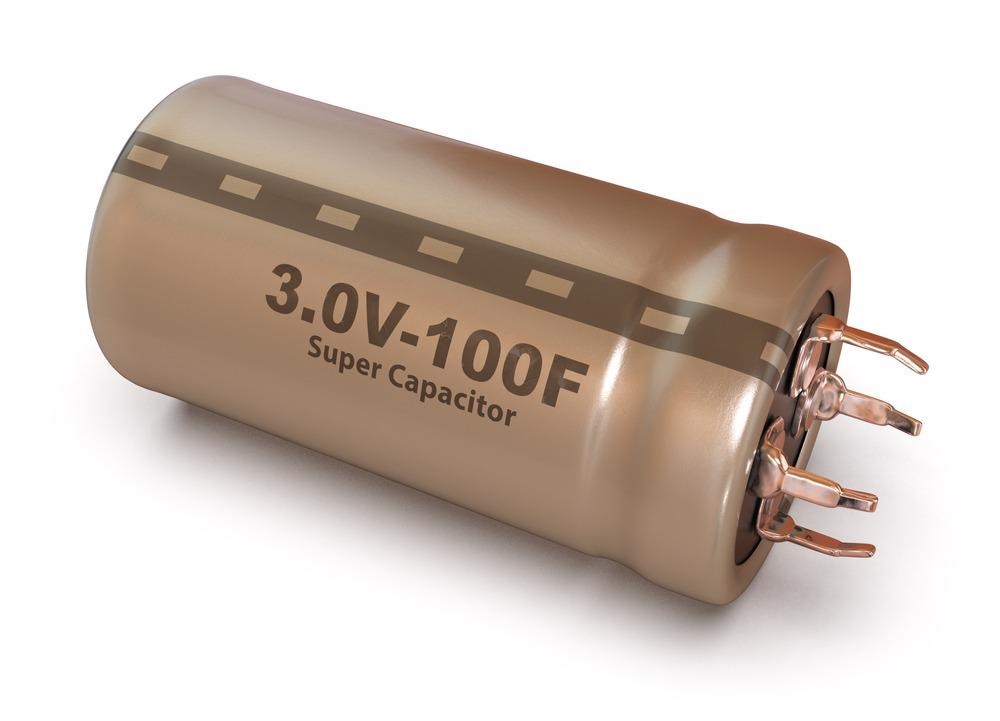The synthetic procedures and characteristics of MXenes were described in a recent review reported in the Journal of Electroanalytical Chemistry, in addition to the investigation of the usage of MXene composite materials for energy storage applications, especially for semiconductors.

Study: 2D MXenes: Synthesis, properties, and electrochemical energy storage for supercapacitors – A review. Image Credit: Peter Sobolev/Shutterstock.com
Need for Supercapacitors
With rising energy demands, the advancement of sustainable, efficient storage and transformation technologies has become a top priority for the world's research, innovation, and design sector. Energy storage systems such as fuel cell technology, batteries, and supercapacitors, which use electrochemistry principles, have piqued the interest of researchers despite having a high carbon footprint.
Supercapacitors have a greater storage capacity than ordinary capacitors. They have a wide spectrum of uses, including hybrid automobiles, optoelectronics, aviation, and microgrids, owing to various advantages including quick charging, extended life cycles, reduced areal concentrations, and great tolerance to thermal stress. However, significant issues with this technology persist, such as poor energy densities and high manufacturing costs.
MXene Supercapacitors
The development of novel, highly efficient electrode materials for supercapacitors is being accelerated.
MXene based devices are ultra-high flow rate capacity supercapacitors when contrasted to ordinary carbonaceous materials. This could be credited to its unique attributes, such as highly advantageous electrical properties, water solubility, and highly pseudocapacitive nature.
As a result, MXenes might be used as an electrode material for supercapacitors as well as a current accumulator for charge flow. These characteristics will reduce the necessity for any additional compact copper conductive material, allowing the fabrication of MXene supercapacitors with large areal and volumetric capabilities for sustainable optoelectronic systems.
What are MXenes?
2D transition metal carbides and nitrides termed MXenes have sparked the interest of researchers in biomedicine, environmental studies, power production and storage, electrocatalysis, and other domains.
Because of their modified surface chemistry characteristics, layered morphology, extravagant optical and electronic properties, and enhanced charge carrier density, MXenes have evidenced exceptional performance in superconductors and fuel cells, indicating potential application for this innovative classification of two-dimensional components in upcoming energy conversion and storage frameworks.
Synthesis Considerations
When a substance is employed as an electrode layer, numerous factors must be considered, such as adaptability, electrical characteristics, and so on. As a result, changes in MXene design techniques, including as interfacial separation, interface dismissals, electrode topologies, and hybrids, have an important role in influencing the electrocatalytic activity of supercapacitors. Because MXenes are primarily manufactured by controlled etching of A layers from their predecessors, MA bond energy in the several MAX stages would restrict their etching requirements. Furthermore, when "n" in Mn+1XnTx increases, MXene's cyclic stability improves substantially.
Over the last few years, MXene research has contributed at an accelerating rate, notably with the implementation of novel fabrication methods and the emergence of new possibilities. The emergence of fluoride-free MXene production procedures, in particular, constitutes a substantial breakthrough in this field. The characteristics and possible uses of MXenes are heavily influenced by manufacturing methods, topologies, geometries, and concentrations of MXenes, as well as the number and kind of surface characteristics. Recent advances in MXenes materials with controlled and changeable characteristics have been made by refining the synthesis processes.
Avenues for Future Work
The impact of the precursor chemicals on characteristics, the formulation of functional groups of unrestricted MXene with an impeccable substratum, the discovery and classification of more MXenes, and the enhancement of top-down and bottom-up methodologies through the partial engraving of layer precursor without "A" elements could all be component of future investigation.
Research into novel etching ways for MXenes manufacture is vital for efficiency, affordability, and reliability to improve MXenes' power storage effectiveness and the manufacturing of MXene-based energy storage. Because oxidation starts at the material's margin, passivating the surface's edge with phosphorus or other surface coatings may help to extend the lifetime of MXenes suspensions.
Furthermore, knowing the influence of MXene design techniques, such as interface coatings, bilayer voids, and nanolayer layering behavior on the energy storage medium is critical.
Processes for increasing the spacing between MXenes nanosheets should be researched even more to improve the kinematics of ionic movement and physical adsorption. Increasing the interlayer gap between the nanosheets is also desirable to load additional host species such as metal oxides/sulfides and polymeric materials. As a result, the volumetric inductance might be considerably increased.
Focusing on the fact that the delaminated MXenes nanofibers can oxidize when MXenes flakes are exposed to air, developing appropriate wrapping strategies for long-term MXenes-based systems is extremely useful and feasible.
Continue reading: How MXene Nanomaterials Are Unlocking Future Nanotechnologies.
Reference
Baig, M. M., Gul, I. H., Baig, S. M., & Shahzad, F. (2022). 2D MXenes: Synthesis, properties, and electrochemical energy storage for supercapacitors – A review. Journal of Electroanalytical Chemistry. Available at: https://www.sciencedirect.com/science/article/pii/S1572665721009474?via%3Dihub
Disclaimer: The views expressed here are those of the author expressed in their private capacity and do not necessarily represent the views of AZoM.com Limited T/A AZoNetwork the owner and operator of this website. This disclaimer forms part of the Terms and conditions of use of this website.